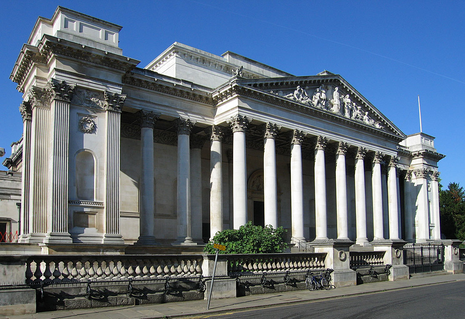Fitzwilliam Museum to exhibit ancient burial artefacts from Kazakhstan
The artefacts come from a rare, undisturbed burial site built by the Saka tribe, only the second to be discovered in Kazakhstan

This autumn, the Fitzwilliam Museum will display approximately three hundred gold artefacts unearthed from ancient burial mounds in East Kazakhstan.
The exhibition’s artefacts come from a rare, undisturbed burial site, only the second of its kind to be discovered in Kazakhstan after the initial discovery of the Issyk mound in Zhetysu in 1969.
These mounds, located in Berel, Shilikti and Eleke Sazy, were built by the Saka tribe approximately 2,700 years ago, so that tribal elites could be buried with their riches and horses. The Saka tribe of Central Asia, which has early roots in present day East Kazakhstan, were known for being expert equestrians, skilled craftsmen and brave warriors. Although this culture flourished between the 8th and 3rd centuries BCE, it is largely unknown outside of Kazakhstan.
Director of the Fitzwilliam Museum Luke Syson described the loan of the items as “hugely exciting.”
He said, “We look forward to bringing the extraordinary culture of the Saka people to life for our audiences and are grateful to our partnership with East Kazakhstan without which enlightening exhibitions such as these would simply not be possible.”
The exhibition will include a reconstruction of the burial mound of a teenage archer, which was recently found at Eleke Sazy. The archer would have been no older than eighteen when he died, and was buried alongside his many golden possessions. These golden symbols of power will be laid alongside him in the reconstruction.
Although many burial sites were looted in antiquity, this mound was hidden from view for 2,500 years by a rock fall, meaning that it remained intact.
Danial Akhmetov, Governor of the East Kazakhstan Region of the Republic of Kazakhstan, said that the “exceptional state of preservation” of this “golden man”, as he has been named, opens up exciting opportunities for research into the culture of the Saka people.
Akhmetov continued: “This exhibition will present Kazakhstan’s most outstanding archaeological discovery of recent years, the ‘golden man’ found in one of the mounds of the Eleke Sazy cemetery, which dates back to the 8th century BC.”
He goes on to highlight that his burial mound was only the second undisturbed Saka burial mound in Kazakhstan after the Issyk mound.
“We are confident that the exhibition, and the research carried out around it, will open to the public new pages in the history of both the East Kazakhstan Region, and all humankind.’’
The Fitzwilliam Museum will collaborate with the University’s McDonald Institute for Archaeological Research, using modern non-invasive technology to study the artefacts.
H.E. Erlan Idrissov, the Ambassador for Kazakhstan to the UK, said he was “delighted” that the British public would be able to immerse themselves in this exhibition, especially since Kazakhstan is celebrating its 30th anniversary as an independent nation this year. Kazakhstan was the last former Soviet Republic to become independent in 1991.
He continued: “I applaud the University of Cambridge and the Fitzwilliam Museum for their prodigious effort to bring Kazakhstan and the Kazakh culture in the focus of the attention of British and global audiences. I am immensely grateful to all organisations and individuals who contributed to the exhibition and helped strengthen further the bonds of friendship between Kazakhstan and the United Kingdom”.
The exhibition, free to attend and entitled ‘Gold of the Great Steppe’, will run from 28th September until 30th January 2022.
 Interviews / You don’t need to peak at Cambridge, says Robin Harding31 December 2025
Interviews / You don’t need to peak at Cambridge, says Robin Harding31 December 2025 News / Downing investigates ‘mysterious’ underground burial vault 29 December 2025
News / Downing investigates ‘mysterious’ underground burial vault 29 December 2025 News / Unions protest handling of redundancies at Epidemiology Unit30 December 2025
News / Unions protest handling of redundancies at Epidemiology Unit30 December 2025 Lifestyle / Ask Auntie Alice29 December 2025
Lifestyle / Ask Auntie Alice29 December 2025 Features / ‘Treated like we’re incompetent’: ents officers on college micromanagement30 December 2025
Features / ‘Treated like we’re incompetent’: ents officers on college micromanagement30 December 2025








